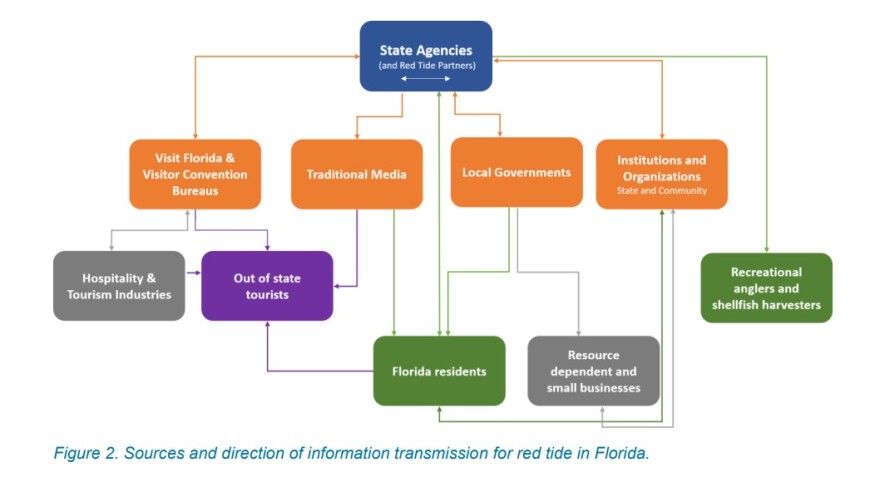A new report lays out the ways in which Florida agencies can communicate more efficiently with each other and the public during a red tide event. This study was a recommendation from the state's Harmful Algae Bloom Task Force.
Click here to view the full study results
Over a year ago, the Florida Fish and Wildlife Research Institute – an arm of the Florida Fish and Wildlife Conservation Commission - granted $92,000 to the UF/IFAS Florida Sea Grant and Gulf of Mexico Coastal Ocean Observing System organizations to hold focus groups, send out surveys and develop a plan to better communicate about the presence of and risks associated with red tide.
Chris Simoniello, outreach and education manager for GCOOS and a research scientist with Texas A&M University, helped with the report. She said there's been a disconnect among Florida's agencies that collect data, like the Department of Health and the Fish and Wildlife Commission. It has left the public searching for all the information in multiple places.
“The key messages and take homes were that the existing platforms are not easy to navigate. The information is spread over too many different platforms. People wanted it in one place so that they could easily find it,” said Simoniello.

As part of the study, the organizations held 11 focus groups across the state and over 1,000 Floridians mailed-in surveys.
"We thank them because this research is critical to have their input. Without it, it's us preaching what we think people want rather than telling us specifically, what's needed," said Simoniello.
For example, she said local businesses along the water need streamlined, updated and location-specific information so that beachgoers and tourists don't get confused as to where they should or shouldn't go during a red tide bloom.
Part of addressing that request includes expanding the recently operational HABscope system, which is a portable microscope that uses video and artificial intelligence to analyze water samples for near real-time cell counts of Karenia brevis, the organism that causes red tide.
“The next challenge is making it readily available for the entire range throughout Florida where… red tide is found,” said Simoniello.
"Our perfect outcome is to protect public health. At the end of the day, we want folks to make informed decisions, especially as it regards to folks with asthma, COPD, any kind of respiratory conditions.”
The Harmful Algae Bloom Task Force is expected to consider the recommendations during its next meeting in October.
According to the report, six months after implementing the plan, state agencies should "prioritize new channels for red tide communication including web, app, social media and signage."
One year after implementation, the report said agencies should then conduct usability surveys or beta-testing with target audiences to pilot new channels for communication before launching. Also around this time, they should verify the implementation of new, multi-lingual communication channels for recreational shellfish harvesters.
And finally, at three-to-five-year intervals, the state should review red tide communication channels and update to reflect the current state of technology.




